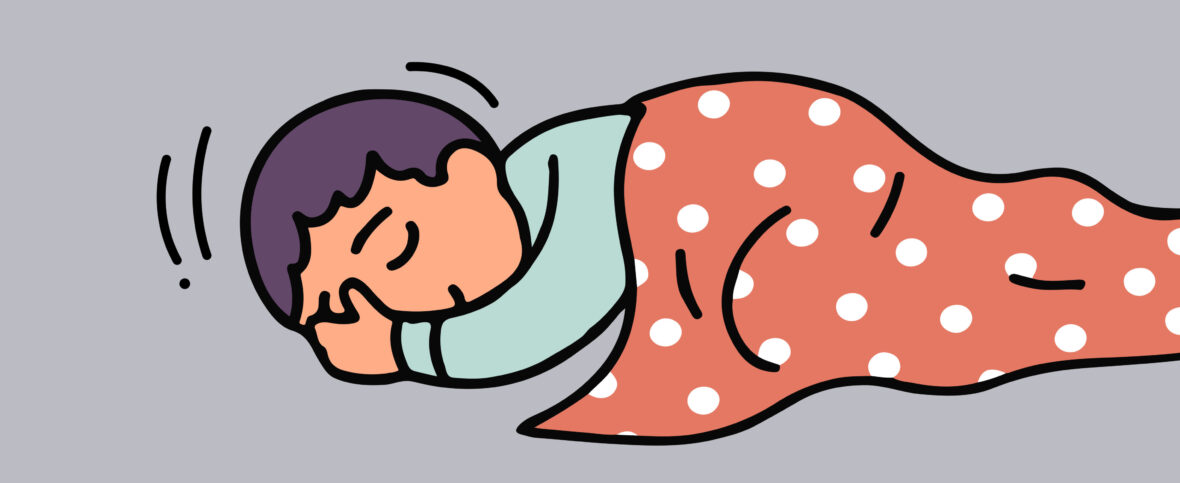See all > Parenthood

Practice safe sleep to protect against SIDS
SIDS (sudden infant death syndrome) is one of the most anxiety-inducing worries faced by new parents. The idea of bringing home a healthy baby only to find that they’ve stopped breathing in their sleep is beyond terrifying. Over the years, SIDS has taken on almost mythical dimensions — obsessed about by some, while being completely denied by others. But SIDS does happen. And while it is scary, the more you know, the more you can minimize the chance of SIDS affecting your family.
What is SIDS and how common is it?
SIDS — sometimes called crib death — occurs when an otherwise healthy baby passes away for unexplained reasons, while the infant is sleeping. Sudden infant death syndrome typically affects children under 1 year of age. And despite being incredibly rare, statistics show that SIDS is the second leading cause of death of healthy infants in Canada.
What causes SIDS?
While safe sleep guidelines have helped reduce cases of SIDS, it’s important to distinguish between crib deaths caused by suffocation and SIDS. SIDS is a diagnosis of exclusion, meaning that the death can’t be explained by another cause after thorough investigation. But it’s not a disease in and of itself. Because of this confusion, some provinces have chosen to stop using the term SIDS entirely, and now label cause of death in these cases as “undetermined.”
Figuring out the exact causes of SIDS is difficult for a number of reasons: it’s based on retrospective information, small sample sizes, and varying definitions of the term itself. As well, autopsies aren’t always conclusive and genetic testing isn’t always done when an infant passes away tragically. Despite this, some research does suggest that certain babies who die from SIDS might have genetic abnormalities. The thought is that the part of the brain responsible for regulating breathing and temperature during sleep may not be fully developed. Other research suggests the possibility that these babies have inner ear damage that makes it more difficult for them to wake up. That, coupled with increased exposure to carbon dioxide in their environment, might be enough to cause breathing failure in an otherwise healthy baby.
Risk factors for SIDS
While the exact causes of SIDS are still not well understood, there are factors that can increase a child’s risk. These include:
- Being placed to sleep on the tummy
- Exposure to cigarette smoke in the womb or the home
- Prematurity or having a low birth weight
- Being a multiple (i.e. a twin or a triplet)
- Having a mother under 20 years old
- Having a mother who received no prenatal care
Age and gender also come into play with babies aged two to four months and boys tending to be at higher risk.
Symptoms of SIDS
Unfortunately, there is no way to spot the signs of SIDS before it happens. SIDS can happen in cases even when parents have done everything right and the baby is seemingly healthy. But before you despair, there are things you can do to minimize the risk.
How to minimize your child’s SIDS risk
While complete prevention of SIDS isn’t possible, the following tips can help to protect your child:
- Always place your baby to sleep on their back
- Sleep in the same room with your baby for the first six months of their life
- Put your baby to sleep in a bassinet, cradle, or crib that meets Canadian safety guidelines
- Don’t put your baby to sleep in a swing, car seat, or bouncy chair regularly or for long periods of time
- Use a firm mattress in your baby’s bed
- Don’t bedshare
- Don’t smoke. Also, minimize (or eliminate) your baby’s exposure to second-hand smoke
- Keep your baby’s bed clear of soft or loose materials like bumpers, stuffed animals, blankets, and pillows
- Place your baby to sleep in a cool room and don’t overdress them
- Breastfeed your baby, even in combination with formula, for at least 2 months
- Consider giving your baby a pacifier while they sleep (after the first four weeks, if breastfeeding)
A number of SIDS monitors currently on the market are supposed to alert parents if babies fall into breathing distress. It’s important to note, however, that there’s no evidence that these monitors help prevent sudden infant death syndrome in any way, and Health Canada doesn’t endorse their use. In fact, they are known to cause extra anxiety and have false alarms.
SIDS can make new parents feel fearful, like they have to stay awake to monitor their sleeping child’s breathing. There’s no denying that just the idea of sudden infant death syndrome is disturbing, but it’s important to remember that it is quite rare. As the parent of an infant, you’re likely already pretty sleep deprived. So practice safe sleep habits and you’ll likely be over the riskiest time in your baby’s life before you know it.
The information presented here is for educational purposes and is not meant to replace the advice from your medical professional.
When using virtual care, all medical treatment is at the sole discretion of the provider. Virtual care is not meant for medical emergencies, and your provider will determine if your case is appropriate for virtual care. If you are experiencing an emergency like chest pain or difficulties breathing, for example, please call 911 or go to your nearest emergency room.
Trusted by millions of Canadians
Get started now

We're trusted by millions of Canadians
Join millions of Canadian families who enjoy 24/7 access to medical care within minutes.
Get started now4.6 score
5K+ Trustpilot reviews
Do you need medical care today?
Trusted, experienced doctors and nurse practitioners are ready to see you.
